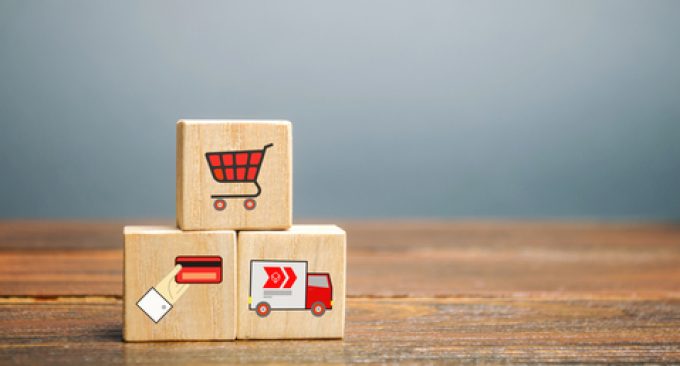Will a little prick burst air cargo's bubble?
Don’t mention tariffs
WTC: PUNISHEDVW: UNDER PRESSUREKNIN: APAC LEADERSHIP WATCHZIM: TAKING PROFITPEP: MINOR HOLDINGS CONSOLIDATIONDHL: GREEN DEALBA: WIND OF CHANGEMAERSK: BULLISH CALLXPO: HEDGE FUNDS ENGINEF: CHOPPING BOARDWTC: NEW RECORDZIM: BALANCE SHEET IN CHECKZIM: SURGING TGT: INVENTORY WATCHTGT: BIG EARNINGS MISS
WTC: PUNISHEDVW: UNDER PRESSUREKNIN: APAC LEADERSHIP WATCHZIM: TAKING PROFITPEP: MINOR HOLDINGS CONSOLIDATIONDHL: GREEN DEALBA: WIND OF CHANGEMAERSK: BULLISH CALLXPO: HEDGE FUNDS ENGINEF: CHOPPING BOARDWTC: NEW RECORDZIM: BALANCE SHEET IN CHECKZIM: SURGING TGT: INVENTORY WATCHTGT: BIG EARNINGS MISS

The rapid e-commerce growth seen under lockdowns may be here to stay, requiring a “fundamental redesign” of supply chains.
According to DHL Consulting CEO Sabine Mueller, the logistics giant saw e-commerce volumes jump 50% in multiple markets in April, with the pandemic “rewriting the rules” of online shopping.
“For example, in Germany we were seeing higher than pre-Christmas volumes,” she said at the Alcott Global Virtual Supply Chain Summit last week.
“And that is something I’m very sure will stay, as people won’t go back to their old, less-convenient shopping habits.”
Ms Mueller said online grocery shopping had increased 31%, with 48% of customers intending to stick with ordering online instead of heading back to the supermarket post-lockdown.
Other online shopping trends included a 210% increase in fitness equipment sales, a “huge increase” in the number of customers over the age of 60 and an increase in the average “ticket size” of virtual checkout baskets.
“So we have more customers buying more, and also buying a larger variety of goods,” added Ms Mueller.
“On the supply side, we’ve also seen significant change; for example, with Shopify registrations up 62% and eBay up 52%, while Amazon has hired an extra 175,000 workers since March to cope with demand. However, its share of online spending in the US has reduced from 42% to 35% because of the increase in competition.”
She said it was important for new retailers to consider whether they wish to sell through the large marketplaces, or whether they are prepared to sell direct to consumer with next-day delivery – and do so without incurring very high logistics costs.
“I think the first important step in the whole e-commerce game is having a decentralised fulfilment network with inventories located close to the end customer,” explained Ms Mueller.
For example, she said, a luxury espresso machine brand was selling B2B across Europe from a distribution centre in the Czech republic, but costs were too high when using the same model for B2C sales. The solution was to study consumer data and implement decentralised warehousing through its 3PL network in the highest-demand areas, which were in the UK and France.
“Cross-border logistics is becoming more and more important,” added Ms Mueller. “Which means high delivery costs for the last mile if you don’t have inventory close to end customers. The new e-commerce game is all about having good data on your customers, to make good predictions on demand and knowing where it will happen.”
Overall, DHL expects worldwide e-commerce growth of 25% this year, up from its pre-crisis estimate of 16%.
“We have a chance now to rethink our supply chains to make them more sustainable, and also to capture the true value of e-commerce,” said Ms Mueller.
Comment on this article